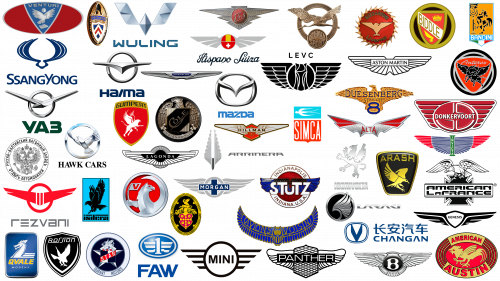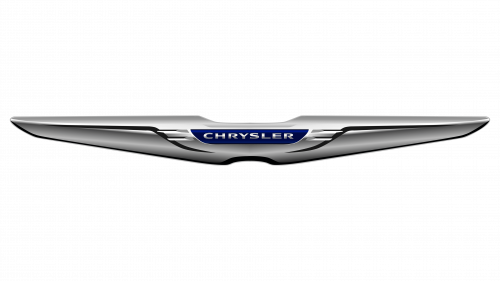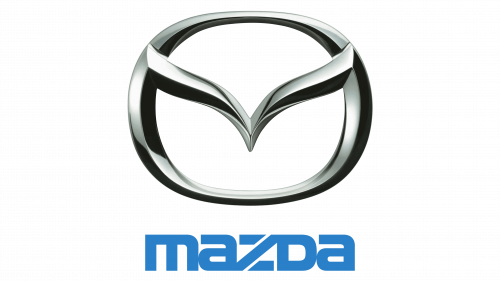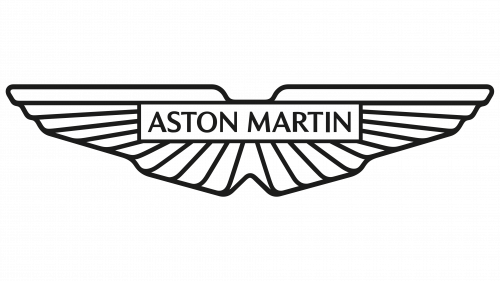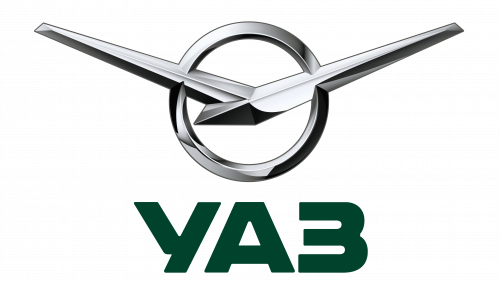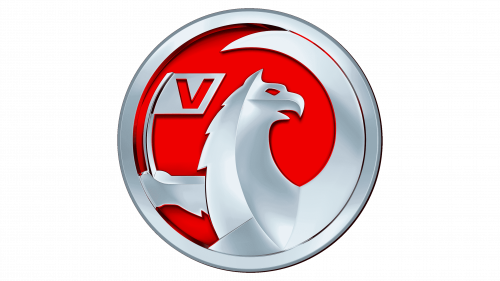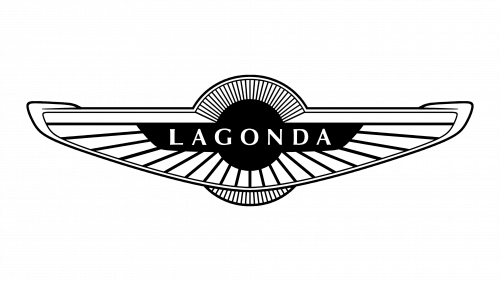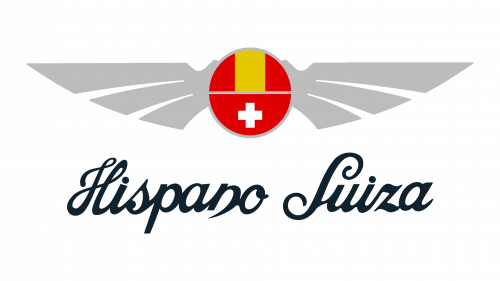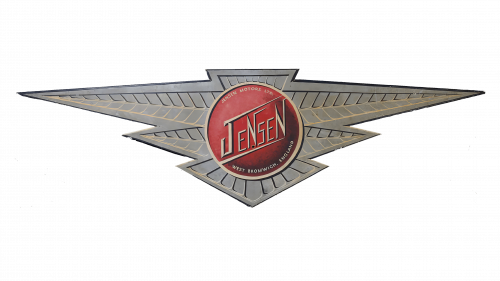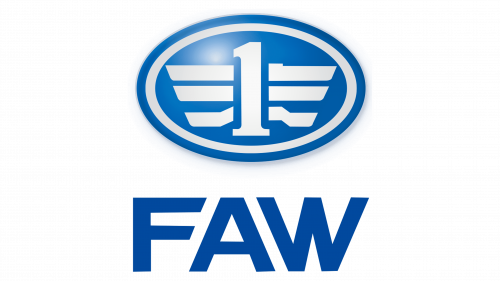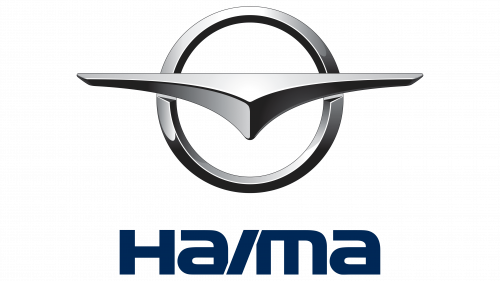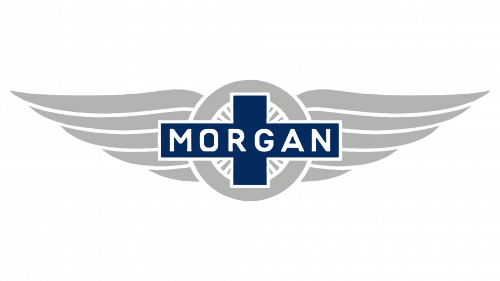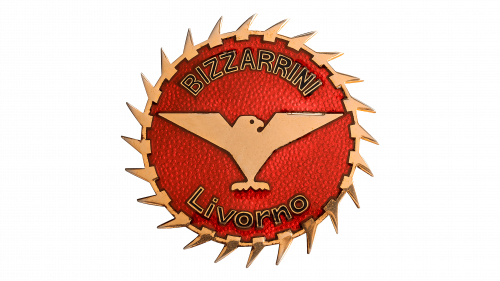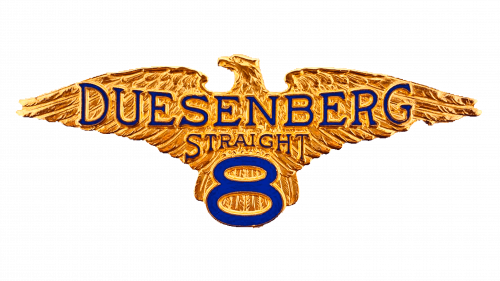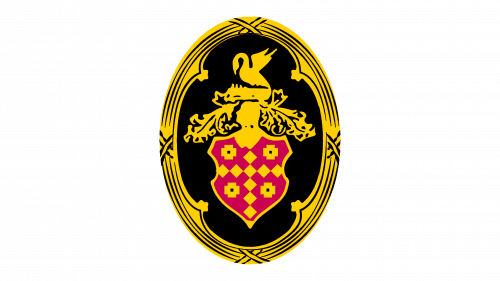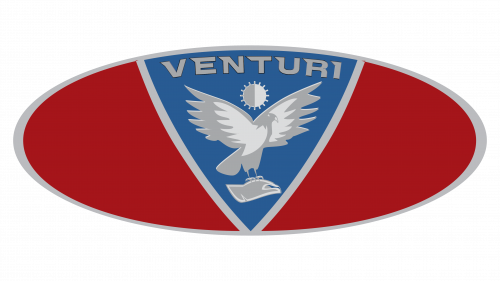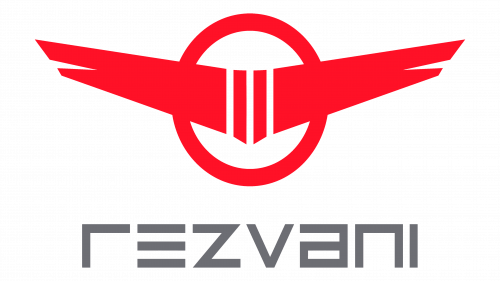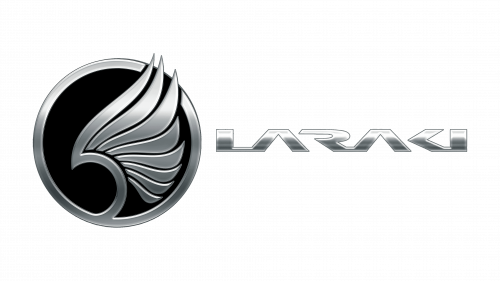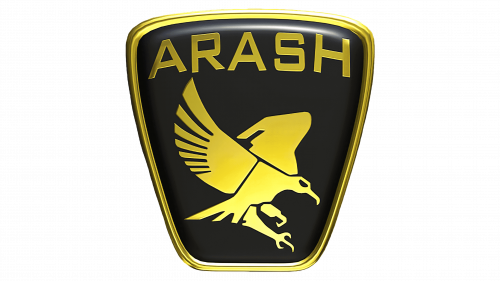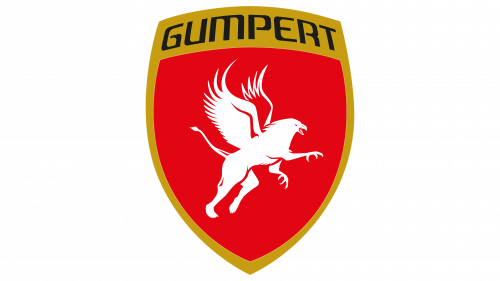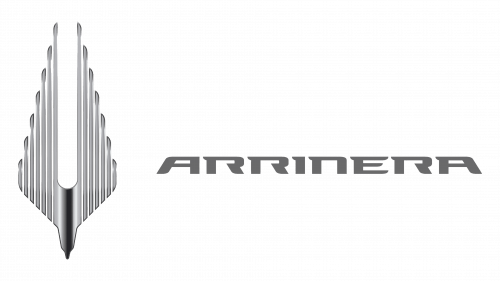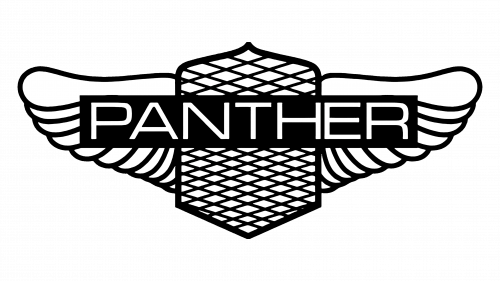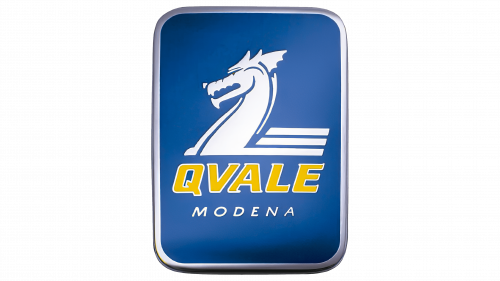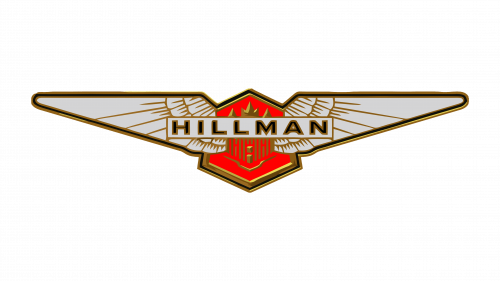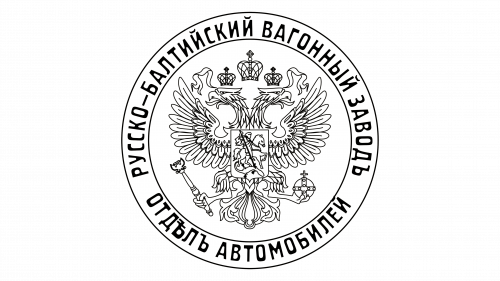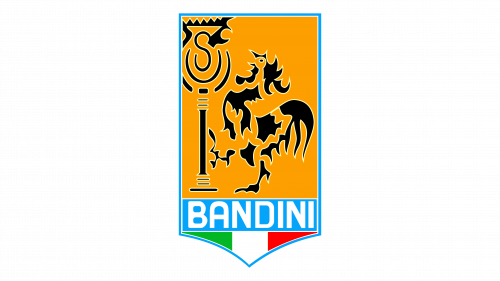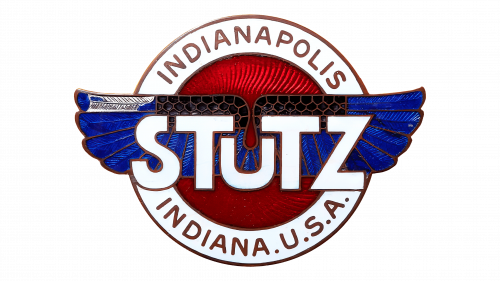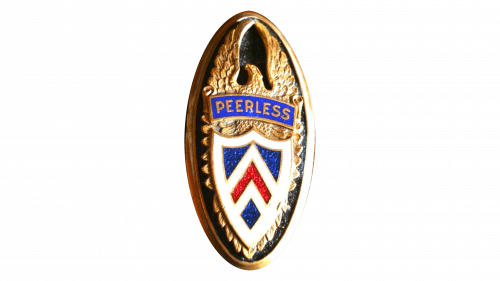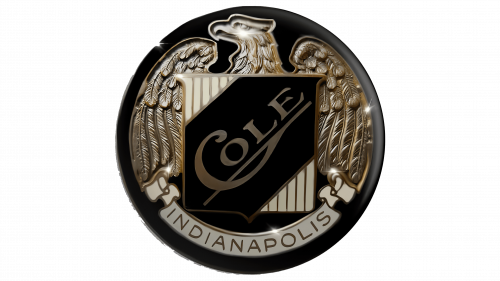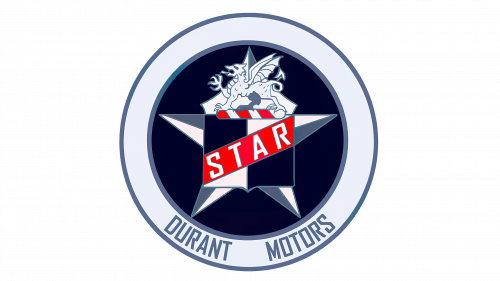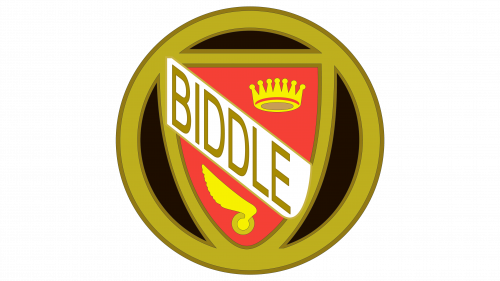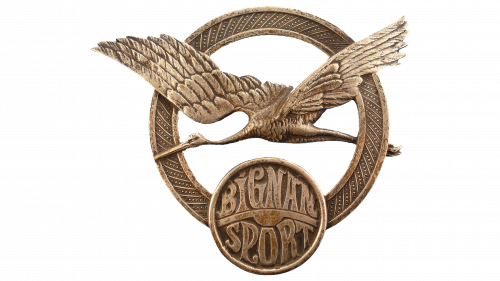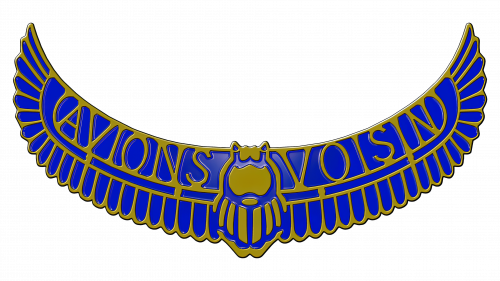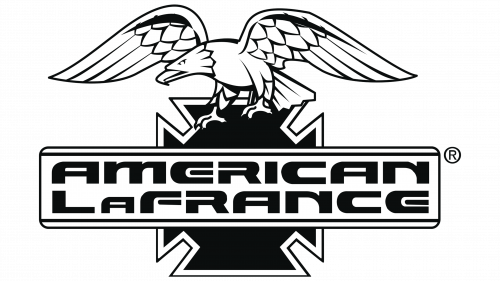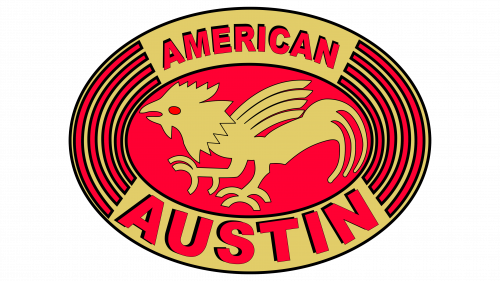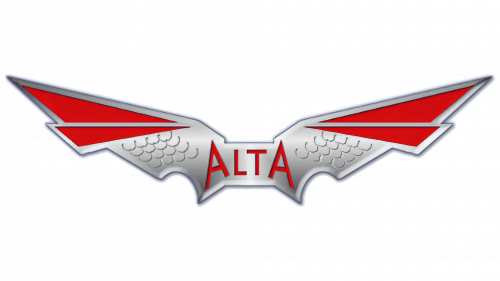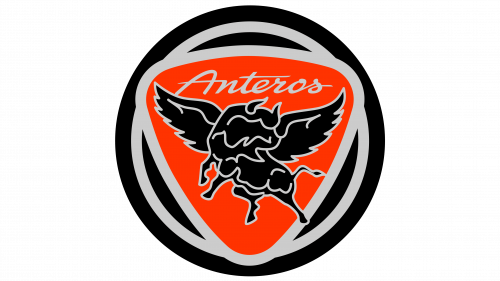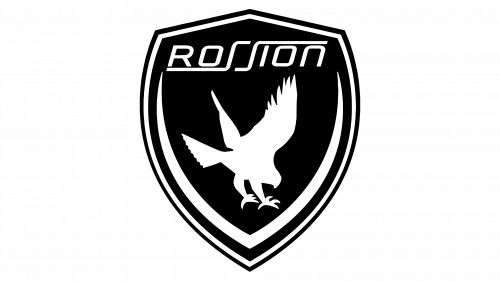With many automobile manufacturers spread across the globe, it is not uncommon to see car emblems adorned with wings. Such symbols often embody notions of freedom, speed, and dynamism. Some of these images are overt, while others include nuances associated with birds.
For an emblem to resonate effectively in any industry, it must convey its message quickly and succinctly. To reduce potential ambiguity, firms often use visuals and motifs that their target groups are familiar with. In the automotive world, symbols such as the star motif, animal-inspired logos, and bird-inspired designs are common.
We will focus on some prominent wing-inspired car emblems in the automotive sector. Each of these illustrations utilizes the concept of wings in their own distinctive manner.
Memorable car logos with wings
Winged car emblems have a significant place in the automotive sector, and their popularity is due to their many connotations. When observing these symbols, bird-like features such as wings and feathers often come to the forefront, reflecting the essence that car manufacturers seek to convey in their branding.
The inclusion of wings in a car emblem often symbolizes swiftness and precision. It brings to mind birds known for their speed and ability to maneuver gracefully in the sky.
Wings symbolize the incomparable freedom and autonomy of driving on the open road. This feeling reflects the freedom and excitement that many motorists associate with driving.
Chrysler
Chrysler stands out in the automotive industry for its distinctive emblem, with wings subtly woven into the design. While some may argue that the wings on the Chrysler emblem are not as pronounced as those on other brands’ emblems, their presence cannot be denied. Positioned prominently, two elongated silver wings extend on either side of a central blue badge that proudly bears the Chrysler name.
The minimalistic design of the wings, devoid of intricate details, gives the emblem a modern and streamlined look. From afar, the wings can even be mistaken for the front bumper of the car, emphasizing the automotive essence of the brand.
Mazda
The famous Japanese automobile manufacturer Mazda has created an emblem that subtly but clearly conveys the essence of flight. The central place in the emblem is occupied by a V-shape, enclosed in an oval, resembling the wings of a soaring bird. This image symbolizes freedom and ambition, attributes deeply rooted in the company’s ethos, and demonstrates Mazda’s commitment to innovation and forward motion.
The integration of the bird’s wings with the oval creates an interesting visual play. It subtly hints at the letter “M,” further cementing the brand’s identity in the emblem. This intricate design speaks to Mazda’s attention to detail and the brand’s ability to intertwine symbolism with aesthetics.
Bentley
Hailing from the heart of the UK, Bentley is the epitome of automotive excellence, renowned for its unrivaled quality and meticulous craftsmanship. Bentley’s emblematic winged logo is both a testament to the brand’s heritage and an embodiment of its lofty ambitions. The Bentley name is embedded in the fine feather detailing of the wings, reaffirming the brand’s significance and heritage.
At the heart of this design is a specially designed ‘B,’ seamlessly integrated between the wings. Over the years, this emblem has become synonymous with luxury, making Bentley cars easily recognizable and revered around the world.
Aston Martin
Originating in the UK in 1913, Aston Martin has established a strong position as a recognized luxury sports car brand. In 1927, the brand introduced its iconic emblem: two captivating wings framing the company name. Over the decades, this emblem has undergone various transformations. Despite all the changes, the wing motif has remained, cementing itself as an enduring symbol of Aston Martin’s heritage and commitment to excellence in automotive design.
Mini
Since its introduction in 1967, Mini has established itself as an outstanding automotive brand. Its journey in the automotive industry took a significant turn in 2000 when BMW acquired the brand, further strengthening its global reach and reputation.
The Mini emblem may seem like a simple amalgamation of a center circle with surrounding lines. But if you delve deeper into its design, you’ll discover the brand’s ingenious intent. According to the creators, these are not just lines but stylized wings that gracefully surround the central motif. These wings, painted in a shimmering silver hue, are not just a decorative element. They symbolize impetuosity and autonomy – two qualities inherent in Mini cars.
The emblem, executed with the utmost care, is a reflection of Mini’s core values and design philosophy. The choice of silver color for the wings gives elegance and, at the same time, symbolizes the modernity and dynamism of the brand.
SsangYong
SsangYong is one of the leading figures in the South Korean automotive industry. Its creation was the result of the merger of two different companies, which, over time, combined their strengths and expertise. SsangYong’s diverse lineup, from tanks and buses to trucks and SUVs, showcases its versatility and technical prowess in creating a variety of specialty vehicles.
The emblem representing SsangYong occupies a prominent place in Korea. At a glance, the emblem’s design may resemble a wreath, and its curved wings embody a minimalist aesthetic. This balance between tradition and modern design makes the emblem recognizable and timeless. The emblem on the streets and highways is a constant reminder of SsangYong’s enduring heritage and its significant role in shaping the automotive industry in Korea and beyond.
Genesis
Originally from South Korea, Genesis has firmly established itself in the global automotive market as a luxury car manufacturer. Recognized for its commitment to precision, innovation, and luxury, this brand operates under the vast umbrella of Hyundai Motor Group, a renowned name in the automotive industry. The introduction of Genesis in 2015 marked Hyundai’s strategic move into the luxury car segment, setting it apart from the parent company’s core lineup.
The Genesis Sports emblem features design elements that include wide wings extending outward to symbolize the brand’s commitment to excellence, freedom, and progress. In the center between these wings is the brand’s name, confidently stating its identity. The emblem is reminiscent of the Chrysler logo, indicating the widespread use of such a design to convey luxury, elegance, and expansiveness in the automotive industry.
UAZ
Hailing from Russia, UAZ is not the first name that comes to mind when considering automobile emblems adorned with fenders. Nevertheless, its historical contribution to automobile production is quite significant. Known primarily as a manufacturer of reliable military vehicles, UAZ works in various areas of automotive engineering, including aircraft and conventional cars.
The UAZ emblem is markedly different from the archetypal winged logos that many people associate with automobile brands. Avoiding traditional bird imagery, the UAZ emblem tends more toward avant-garde design, reflecting the silhouette of an airplane. This design choice emphasizes the brand’s entry into aviation and reflects its forward-thinking approach and commitment to modernity.
Vauxhall
The Vauxhall emblem, imbued with symbolism, is an elaborate griffin holding a flag with a pronounced ‘V.’ At first glance, the griffin’s wing gracefully soars upwards from the right side of the circular frame, subtly complementing the overall design.
Characterized by modern and polished lines, Vauxhall’s design seamlessly blends tradition and modernity. This skillful combination of elements allows the brand to remain memorable and stand out in the vast automotive market. The emblem as a whole speaks to Vauxhall’s commitment to quality, innovation, and design excellence.
Lagonda
Hailing from the historic sites of England, Lagonda has established itself as a pioneer in the luxury car industry. Its historical background and heritage made it a game changer when it was acquired by Aston Martin, another stronghold of the automotive industry, in 1947.
The emblem is dominated by widely spaced wings that create a sense of freedom, movement, and progress. Carefully designed wings serve as a background for the pronounced name of the brand, ensuring its immediate recognition. The emblem is reminiscent of the Aston Martin logo, likely indicating their intertwined history and shared ethos.
Hispano-Suiza
Founded in 1904, the company combines Spanish and Swiss automotive craftsmanship. This fusion can be seen in a company that has stood the test of time and now operates under the auspices of Safran and the Peralada Group.
The Hispano-Suiza emblem is the epitome of elegance and modern design aesthetics. It features a circular heart, within which are intertwined images of the Swiss and Spanish flags. This intertwining symbolizes the harmonious combination of Swiss precision and Spanish flair. Adjoining the center circle on either side are wings, each decorated with three different feathers. These wings evoke a sense of freedom and movement and symbolize the brand’s involvement in the aviation industry.
Jensen Motors
Emerging from Britain’s rich automotive history, Jensen Motors Limited has made its mark in the industry. In the nearly century between its founding and its official closure in 2011, the brand left a significant mark on the sports and commercial vehicle sector. Their expertise was not limited to manufacturing; they were also adept at creating specialized bodies. This skill led to the company working with global automotive giants such as Ford and Chrysler, which strengthened Jensen’s position in the industry.
The Jensen Motors logo was striking and symbolized the essence of the brand. Dominated by sprawling wings, the logo design was far from traditional. The sharp and angular edges of the wings echoed the brand’s philosophy of soaring above the competition and breaking boundaries. The wings symbolize freedom, speed, and the brand’s desire to always aim for the sky in the field of innovation and quality. The choice of such a bold logo for Jensen Motors truly reflected its ambitious endeavors in the automotive world.
FAW
FAW, referred to by many as First Automobile Works, holds an important place among the Chinese automobile giants. As one of the “Big Four” Chinese automakers, it is a testament to its automotive prowess and the growth of the industry.
FAW’s versatility in manufacturing is evidenced by its diverse range of automobiles. It not only meets personal transportation needs with passenger cars but also plays a key role in public transportation by producing passenger buses. The brand is also trusted in the logistics and transportation sector as it manufactures light, medium, and heavy-duty trucks. Each category of vehicles serving different purposes emphasizes the brand’s commitment to quality and innovation.
Haima
Founded in 1992, Haima has firmly established its place in the automotive industry, especially in the corporate sector. Its emblem, which seamlessly blends simplicity and modernity, is a streamlined wing shape that gracefully transitions into a gleaming silver circle.
The company’s approach to design reflected in the emblem reflects its broader vision to produce vehicles that are timeless, reliable, and refined. Haima’s decision to choose a winged emblem can symbolize flight, progress, and freedom.
Wuling
Founded in 2007, Wuling has carved out a niche for itself in the electric vehicle industry by entering the vast Chinese automotive market. The brand’s emblem, characterized by a mesmerizing set of red diamonds, seamlessly combines innovation and traditional aesthetics.
The design of the emblem is an original combination of two different elements: the abstract image of a flying bird and the clear silhouette of the letter “W.” This dual symbolism serves as a reference to the brand’s name and, at the same time emphasizes its commitment to eco-friendly mobility solutions. The use of red, a color deeply rooted in Chinese culture and symbolizing good luck and joy, further emphasizes the brand’s origins and aspirations.
The Wuling emblem continues its journey in the automotive sector and serves as a testament to the company’s innovative spirit of combining modern electric vehicle technology with tradition and heritage.
London EV Company
Founded in the heart of the UK, London EV Company, commonly referred to as LEVC, has firmly established its position in the automotive engineering arena. Being under the umbrella of the renowned Chinese automotive giant Geely, LEVC combines British craftsmanship with global technology to position itself well in the global competition.
The LEVC emblem is an example of design sophistication. The circular motif encompasses the elaborate head of a horse, a universal symbol of strength and grace. The image of the horse is associated with strength, agility, and forward motion, which is perfectly in line with the core values of LEVC and the cars it builds.
Framing this central motif is a set of stunning black wings. These wings elevate the emblem, creating a sense of movement, freedom, and evolution. The choice of black for the wings gives the emblem depth and sophistication, enhancing its luxurious and timeless appeal. All these elements combine seamlessly in an emblem that is not only attractive but also reflects the essence of LEVC – a harmonious blend of tradition and innovation.
Morgan
Brands such as Morgan contribute to the British affection for winged car emblems. This family business, which traces its roots back to Henry Morgan, is a testament to Britain’s automotive heritage.
Its masterfully designed emblem is central to the Morgan brand identity. Within its confines is a circular motif with the proud name “Morgan” strategically placed in the shape of a cross. The wide wings encompassing the center circle are eye-catching. The wings are shiny silver, neither too flashy nor too simplistic. Their design combines grace and dynamism, reflecting the brand’s commitment to elegance and perfection. The silver hue adds visual appeal to the emblem and symbolizes the brand’s impeccable reputation in the automotive industry.
Donkervoort
In 1978, a unique car company appeared in the Netherlands, specializing in the creation of hand-built, ultra-lightweight sports cars. The desire for precision and detail was not only evident in the cars but also in the Donkervoort emblem. The emblem, designed in a minimalist style, represents wings that embody the spirit of freedom, speed, and elegance.
When looking at this design, one can draw parallels with the wings used by the famous Chrysler brand. Whether intentional or accidental, this similarity is in keeping with the industry’s long tradition of wings symbolizing speed, agility, and the desire to reach greater heights. Such symbolism is indicative of the manufacturer’s desire to push the boundaries of automotive design and performance.
ISO Rivolta
Hailing from Italy, a country synonymous with design and talent, ISO Rivolta made its mark in the automotive and motorcycle industry between 1953 and 1978. Despite the company’s modest tenure in the market, its impact on design and craftsmanship was palpable. ISO Rivolta’s offerings were characterized not only by mechanical excellence but also by an attractive visual appearance.
Central to the corporate identity was an emblem that elegantly reflected the company’s Italian heritage and ethics. The emblem featured the brand’s name, reflecting its commitment to quality and authenticity. Accompanying the name was the tricolor of the Italian flag, a proud reference to the company’s roots and its commitment to Italian standards of excellence.
The most eye-catching element of the emblem was the image of a golden griffin, a mythical creature renowned for its strength and majesty. With its wings spread wide, the griffin symbolized both strength and grace – characteristics that ISO Rivolta sought to embody in its cars. The griffin, with its wings spread out, seemed ready to soar, just like the brand’s ambition to reach unrivaled heights in vehicle design and functionality.
Bizzarrini
Founded by Giotto Bizzarrini, an engineer who previously worked with such famous brands as Ferrari and Alfa Romeo, Bizzarrini originated in the 1960s as an Italian manufacturer of automobile parts. It gained attention for its elaborate and technologically advanced sports cars. Although the company’s journey in the automobile industry was short-lived and ended in 1969, its legacy still lives on, especially among vintage car enthusiasts and collectors.
The Bizzarrini company badge is a testament to its vibrant identity in the automotive world. The company’s name was emblazoned on a rich red background, which in the automotive industry is often associated with passion and speed. The central element of the design was the image of a bird. This bird motif can be interpreted as a symbol of freedom, agility, and soaring ambition, which echoes the concept of the car.
Duesenberg
The Duesenberg brand, introduced in 1913 in the United States, became a benchmark in the automobile industry. Although it had ceased operations by 1937, the legacy left by the brand cannot be denied. Even today, car enthusiasts can come across some of these iconic cars kept in the collections of car enthusiasts.
The emblem of the Duesenberg company is a testament to its grandeur and luxury. The emblem is dominated by a golden eagle that symbolizes strength, freedom, and perfection. The wings of this majestic bird gracefully embrace the brand name “Duesenberg,” illustrating protection and support. What draws attention, however, is the number “8” discreetly placed at the base of the eagle’s tail. This may hint at the eight-cylinder engine, one of the features that perhaps distinguished the brand in its day.
Packard
Packard, born in Detroit, Michigan, has entered the annals of automotive history as a manufacturer of premium luxury cars. This American brand, born in the bustling industrial era of the late 19th century, produced its first cars in 1899. As the decades passed, the company carved a niche by producing cars that enthusiasts and regular buyers coveted. In 1956, Packard closed the curtain, marking the end of its distinguished journey in the automobile industry.
An important aspect of Packard’s identity was its emblem, which is evocative and regal in its presentation. The dominant emblem is a gracefully seated swan with majestically outstretched wings. The choice of the motif was not accidental: the swan, often associated with grace and luxury, perfectly reflects the brand’s essence.
Below the swan is an intricate crest that forms the base. Rich in detail and elegance, this crest serves as a visual element and reaffirms Packard’s commitment to craftsmanship and attention to detail. The combination of swan and crest embodied the brand’s ethos: luxury, elegance, and timeless design.
Invicta
Invicta, founded in the English county of Surrey, is a testament to British automotive excellence. Over the course of its existence, the brand has produced numerous cars, each with distinctive characteristics that have made them the domain of car enthusiasts and collectors. Invicta’s heritage is rooted not only in its cars but also in the emblem that adorns its creations.
The emblem, which is an integral part of the brand’s corporate identity, is an elaborate work of art. In the center of the emblem is a prominent letter “I,” which is not only the initial of the brand but also carries the name “Invicta.” Intricate wings frame this central motif, each feather precisely drawn. These wings symbolize freedom and speed and embody the ethos of a brand that strives to be above others in design and innovation.
Venturi
Originating from luxurious Monaco and established in 1984, the Venturi brand is a testament to the craftsmanship of luxury automobiles. This luxury is reflected in its emblem, intricately designed to embody the essence of the brand. At the center of the emblem is a bird-like figure resembling an eagle with majestically spread wings. This majestic bird is set against a triangular motif encompassed by a rich red oval, further emphasizing its grandiosity.
Over the years, the Venturi emblem has become a beacon for those who appreciate the automotive world’s combination of performance, luxury, and exquisite design. This meticulously crafted emblem serves as a brand identifier and a symbol of the brand’s enduring heritage in luxury automobiles.
Rezvani
Rezvani entered the automotive market in 2013, standing out even among long-established automotive brands. With roots tracing back to Ferris Rezvani, an experienced designer who previously worked with automotive giants such as Ferrari and Aston Martin, the brand demonstrates a combination of innovative spirit and rich heritage.
The Rezvani emblem deserves special attention. The emblem depicts wings that are strikingly reminiscent of airplane wings. The wings, inspired by aviation, speak of speed, the pursuit of precision, state-of-the-art technology, and a philosophy of moving forward.
Although relatively young in the automotive industry, Rezvani has already made it clear that it wants to set the benchmark for design and performance.
Laraki
Based in Morocco, Laraki Automobiles is a testament to automotive excellence, especially in the areas of high-performance sports cars and concept design. Founded in 1999, this company was laid down by Mohammed Laraki, who sought to make a name for himself in the world of luxury automobiles. Under his leadership, Laraki Automobiles continues its journey, reaching new milestones and setting new benchmarks every year.
At the heart of the emblem is a bright silver wing that conveys the concepts of speed, elegance, and aspiration. This unusual wing in an elegant design embodies the ethos of the brand – to strive high, push boundaries, and soar in the automotive industry.
The wing in the logo is indicative of Laraki’s vision for the future of automotive design, epitomizing grace and power. As Laraki Automobiles has moved forward over the years to create masterpieces on wheels, this iconic wing has become synonymous with the brand, symbolizing the promise of unparalleled performance and impeccable design.
Arash
Based in England, the Arash Motor Company produces high-end super and hypercars. It has introduced only four models since its inception. Two of them continue to come out of the production facilities. One more model was expected to be launched in 2021. Given the company’s commitment to exclusivity, meeting an Arash car on the roads is a rarity. Previously, the company’s emblems featured a flying bird, perhaps symbolizing dominance and speed.
Gumpert
The Gumpert company, which became known for its rich German automotive heritage, has carved out a niche for itself in the world of sports cars. Among its outstanding creations is the Gumpert Apollo, a testament to the brand’s commitment to performance and innovation. The company was founded in 2004. – credit goes to Ronald Gumpert, whose pedigree in the automotive world is evidenced by his previous collaboration with Audi Sport as director.
While the cars attracted attention on roads and race tracks, the brand’s style also became prominent. The logos associated with Gumpert and transferred to “Apollo Automobil” were not just conventions but complex designs that reflected the ethos of the brand. One of the most striking symbols incorporated into the corporate identity is the griffin, a mythological creature that symbolizes strength, speed, and freedom with its wings.
Arrinera
Originally from Poland, Arrinera Automotive, founded in 2008, has been recognized for its emblem with graceful wings, distinguishing it from many other winged automotive logos. Over the years, Arrinera has undergone various logo redesigns. What has remained constant, however, is the theme of a modern take on the timeless wing image. Each iteration offers a fresh look while staying true to the original essence of the brand.
Panther
The British auto industry has its share of intriguing signature styles, and the Panther brand is no exception. While the brand’s name immediately brings to mind a feline predator, its emblem has an unexpected direction. The centerpiece of the emblem is a motif that resembles the grille of a vintage car.
This central motif is flanked by sprawling wings that add dynamism and zest to the entire design. These wide and finely detailed wings convey the idea of freedom, speed, and agility. Under the grille and between the fenders is a prominent banner. It proudly displays the brand name “Panther,” which further emphasizes the company’s individuality and serves as a focal point for the logo.
The choice of elements in the Panther logo is a great example of how a brand can combine seemingly disparate images to create an identity that stands out, resonates with its target audience, and emphasizes its values and heritage.
Qvale
There are many brands in the automotive world, each with its own unique heritage, and the Italian company Qvale is a chapter in that vast narrative. Founded by the visionary Bruce Qvale, this relatively short-lived company brought a touch of Italian craftsmanship to the automotive world.
The Qvale emblem was a blend of tradition and modernity. The choice of the dragon – a symbol often associated with power, strength, and mysticism – was easily combined with a modern touch of the emblem – three linear stripes resembling wings.
Despite its brief stay in the automotive industry, Qvale managed to make a name for itself. The cars produced under this brand were not just vehicles but expressions of art, engineering, and passion. Their rarity and the craftsmanship with which they were created have led many car connoisseurs to consider them valuable pieces worthy of any collector’s garage.
Hillman
Originating in the UK in the early 20th century, Hillman became a beacon of automotive innovation in an era of rapid development in the automotive sector. Established in 1907 and lasting until 1931, the company flourished under the leadership of William Hillman and Louis Coatalen, two visionary founders who were instrumental in shaping the brand’s identity and reputation.
The brand’s emblem is undoubtedly mesmerizing, drawing parallels with the symbolism of many modern luxury car brands. A pair of snow-white wings symbolizes the freedom, elegance, and innovative spirit that embodied the Hillman cars. In the center of the wings is a banner with the name of the brand “Hillman,” emphasizing its importance in the automotive field.
Despite the fact that the years of the brand’s activity were limited to a certain period, its emblematic winged symbol remains a constant reminder of the time when British automobile design and craftsmanship reached new heights.
Simca
Car company Simca, hailing from France, showcased an emblem that evokes a sense of nostalgia. The emblem design, which features a bird in the form of a swallow, is complemented by a vibrant color palette that reflects the creative energy of its time.
Founded in 1934, Simca carved a niche for itself in the automotive industry, leaving behind a legacy that lasted for several decades until its eventual closure in 1970. Although the company is no longer in business, its brand and cars have not faded into oblivion. To this day, selected enthusiasts and collectors cherish Simca cars as valuable assets. The appeal of the brand and the fondness with which it is remembered.
Changan
Founded more than a century and a half ago, Changan is one of China’s most famous automakers. As a state-owned enterprise, it has made a significant contribution to the development of the country’s automotive industry, producing a variety of vehicles – from vans and cars to light trucks and commercial vans.
At first glance, the emblem has a simplistic V-shaped pattern. However, a closer look reveals that the emblem is a pair of wings. In a competitive global automotive market, such symbols and the meanings embedded in them can serve as a powerful reminder of a brand’s ethics, history, and uniqueness to its vision. With over 159 years of experience, Changan’s choice of the winged emblem perfectly complements its long-standing reputation and ambition in the industry.
Russo-Balt
Originally from Russia, Russo-Balt is one of the pioneers in the production of cars and airplanes in the country. Its emblem draws inspiration from the heraldic symbols of the Russian Empire: it depicts a double-headed eagle with intricately shaped wings.
Although such intricate patterns may seem out of place in today’s streamlined and minimalist branding, for Russo-Balta, this emblem is a testament to its deep history and heritage. The detailed image refers to a bygone era and emphasizes the company’s commitment to preserving traditions. By using such a rich symbol in its branding, Russo-Balt sends the message that the company attaches great importance to its lineage and the historical significance of its activities.
Isdera
Isdera entered the automotive market in 1982 in the heart of Germany with a focus on creating high-performance sports cars. While the design of the brand’s cars caught the eye on the streets, its emblem also caught the attention of many.
The emblem, designed in soothing soft blue colors, radiates calmness and dynamics at the same time. On this calm background is the image of a blackbird, reminiscent of a falcon with its pose and majesty. The choice of the image was not just aesthetic. The falcon, known for its speed and precision, symbolizes the qualities Isdera sought to instill in its line of vehicles.
The choice of a vertically oriented badge is unique, making it stand out and remain in the memory of those who catch a glimpse of it. The Isdera emblem, like its fleet of cars, reflects the brand’s commitment to aesthetics combined with performance.
Bandini Automobili
Founded in 1946 in Italy, Bandini Automobili was a tribute to its visionary founder, Ilario Bandini. For nearly half a century, until 1992, the brand was synonymous with luxury sports cars reflecting post-war affluence and craftsmanship.
The Bandini emblem was a mélange of symbolic elements. The bright colors of the Italian flag demonstrated national pride and origin. The presence of a bird resembling a rooster gives the logo an intriguing edge. The inclusion of the bird in the logo is interpreted as an indication of agility, alertness, and dynamism – qualities often associated with powerful sports cars.
Stutz
Originally from the United States, the Stutz automobile brand emerged in 1911 and carved a niche for itself by creating luxury cars of impeccable quality. Over time, these cars became not only a means of transportation but also turned into a symbol of prestige and luxury. The emblem of the brand is characterized by bright colors and traditional motifs characteristic of automotive insignia.
An intriguing element of the Stutz emblem is the inclusion of a racing flag set against a background of azure wings. This design choice is not merely decorative but carries a deeper meaning. With its emblem, Stutz not only enshrines its heritage in the annals of automotive history but also embodies the essence of an era when luxury and performance went hand in hand.
Peerless
There have been many noteworthy names in automotive history, including Peerless Motor Car Company. Part of the famous trio of the “three P’s,” along with Packard and Pierce-Arrow, Peerless carved out a special niche in the automotive market.
The company introduced revolutionary technologies that became an integral part of automobiles around the world. For example, drum brakes were a significant leap in automotive safety, and Peerless was at the forefront of this evolution. The move to closed-body cars changed the aesthetics of the automobile, providing drivers and passengers with increased comfort and a more streamlined appearance.
The company’s emblem – an imposing eagle – testified to its American roots and symbolized the rise of its ambitions. The eagle’s wide-spread golden wings symbolized freedom, majesty, and the promise of uncharted horizons. The legacy of Peerless and its emblematic eagle remains a testament to an era when innovation and luxury went hand in hand, changing the contours of the automotive world.
Cole
Appearing at the beginning of the 20th century, Cole Motor Car Company occupied the niche of luxury cars. During its two decades of operation, from 1909 to 1929, the brand became synonymous with luxury and sophistication in the automotive sector. But it wasn’t just luxury that distinguished the brand; it was also instrumental in the early introduction of the V8 engine.
The Cole Motor Car Company’s emblem was as prominent as its cars. One memorable badge featured a pair of majestic silver wings, perhaps signifying speed, elegance, and a desire to soar above the competition.
Although the company’s journey was relatively short compared to other automotive giants, its history, represented in part by those gleaming wings, continues to resonate with classic car enthusiasts and historians.
Durant
Originating in 1921 in Lansing, Michigan, Durant Motors carved a niche for itself in automotive history despite not being as well-known as some of its contemporaries. Being in the realm of automotive giants, this company has shown a flair for branding, which has been reflected in the choice of its emblems over the years.
Among the various symbols adopted by the company, one in particular stands out. The emblem depicted a dragon-like creature, reminiscent of mythical tales, perched on a shining star. The choice of this symbol was no accident, as Durant had consistently used the mythical creature motif in many of his coats of arms.
The placement of this creature above the star hints at the company’s desire to shine brightly in the automotive world, striving for excellence and distinction. Through its emblem, Durant Motors subtly conveyed the values and attitudes it held in the highly competitive automotive industry of its time.
Biddle
Biddle, which manufactured automobiles from 1915 to 1922, displayed an emblem that uniquely combined several elements to create an image of luxury and elegance. Biddle’s emblem, which did not last long in the automobile industry, remained distinctive and memorable.
The emblem embodied the essence of the brand in the form of a shield, symbolizing protection and durability. In the center of the shield was a banner, symbolizing the brand’s pursuit of perfection and its regal aspirations. The shield is crowned with a richly decorated crown, indicating the luxury and premium nature of the brand’s cars. The lower left corner of the shield was decorated with a pair of graceful wings, symbolizing speed, agility, and freedom.
Despite the fact that the company Biddle has worked in the automotive world for not so many years, the intricacy and thoughtfulness of the design of its emblem continue to arouse interest among fans of automotive history.
Bignan
Originally from France, Bignan is a testament to the rich automotive history of the early 20th century. From 1918 to 1931, this brand occupied its niche in the domestic market of the country, offering cars with a characteristic design of a “torpedo-shaped” body equipped with four-cylinder engines.
Although Bignan’s involvement in the automobile industry was relatively short-lived, its winged emblem made a lasting impression. This emblem, which gracefully embodies the brand’s desire for speed and freedom, remains recognizable among vintage car enthusiasts and historians. Although Bignan ceased operations many years ago, its history has been preserved through this emblem and the memories of those classic cars.
Avion Voisin
Founded in France, Avion Voisin was a famous automobile manufacturer that operated from 1905 to 1946. The emblem of this company was instantly recognizable due to its striking winged design. The wings, done in an elegant combination of gold and blue colors, stretched across the badge more widely than was commonly seen on many other automobile badges of the era. This bold and unique choice of badge allowed Avion Voisin automobiles to stand out, attract attention, and distinguish the brand from its contemporaries.
American LaFrance
In the history of the automobile industry, there are brands that specialize in different niches. One such specialized brand was American LaFrance, often abbreviated as ALF. This American manufacturer was characterized by a concentrated approach to production, dedicating its product lines primarily to emergency and rescue vehicles. Spanning a significant period of time from 1873 to 2014, the brand chose an eagle as its emblem, symbolizing its strength and elegance. The silver logos on the vehicles not only stood for the company name but were also adorned with the majestic image of an eagle with outstretched wings, signifying protection and vigilance.
American Austin
The annals of the automobile industry are replete with brands that have left an indelible mark. American Austin is one such brand that, despite being produced between 1929 and 1956, has left an indelible legacy in the industry.
The emblem chosen by American Austin was both striking and symbolic. The logo was dominated by a rich palette of red and gold colors, with an eye-catching red oval serving as the background. The central element of the design was the griffin, a creature from myths and legends that symbolizes strength, power, and protection. This mythical beast was adorned with a pair of glittering golden wings, which gave the design majesty and grandiosity. The choice of such a beast and color scheme underlines the brand’s desire to combine tradition and innovation.
Alta
The automotive industry has witnessed the rise and fall of many brands throughout its history, and one such brand is Alta. Originating from Greece, this brand made its name between 1962 and 1978. Over the years, the Alta logo has undergone several transformations. One of the most notable emblems had a striking resemblance to the wings of a bat, on which the brand name “Alta.” Such winged emblems are unique to automobile brands, making them an interesting object of study.
Anteros
Among the vast number of automobile manufacturers, there are unique brands that, despite limited production, leave a significant mark on the industry. One such brand is Anteros coachworks. Based in the vibrant state of California, this company may not have had a wide range of products, but it created a car that left enthusiasts in awe.
The only car it produced was an impressive marvel modeled after the C6 Corvette. This was no ordinary car: under its hood roared an engine capable of producing over 500 supercharged horsepower, a testament to the company’s commitment to power and performance.
Founded in 2005, the corporate identity of Anteros Coachworks was as unique as its car. The emblem featured a bull, an animal that symbolizes strength and endurance. Complementing this image were sleek black wings that gave the design mystery and freedom.
While Anteros Coachworks may not be a household name today, its small but significant contribution to the automotive industry is a story worth telling.
Rossion
The design of the emblem of Rossion, an up-and-coming automotive brand, blends tradition with modernity. At the center of the emblem is a gracefully soaring hawk or falcon gracefully perched on a strict black shield-shaped background. The emblem is distinguished by the elaborate design of the bird and the choice of a modern font, which is used to write the name of the brand.
This design demonstrates the brand’s ability to incorporate the age-old symbols of power and freedom – wings – into the context of the 21st century. The careful balance of classic and modern elements in the emblem reflects Rossion’s commitment to innovation while respecting the rich heritage of automotive aesthetics. By combining the timeless appeal of winged emblems with modern design elements, Rossion demonstrates a connection to the past while looking confidently to the future.
Hawk Cars
Based in the heart of the UK, Hawk Cars is a distinctive automotive brand specializing in bespoke vehicles. The emblem depicts a hawk in flight, gliding effortlessly over a gleaming silver circular frame.
The emblem of this British automaker has left a distinctive mark. The choice of the hawk symbolizes precision, foresight, and agility – attributes crucial to the production of bespoke cars. The circle, symbolizing unity and completeness, perhaps reflects the brand’s commitment to design and performance excellence. The Hawk Cars logo eloquently conveys its dedication to craftsmanship, attention to detail, and spirit of flight and freedom.
Car logos with wings
Tracing the history of automobile emblems, it can be seen that wing motifs feature prominently in many car logos. This list includes a few well-recognized brands that have used wings in their branding, but lesser-known companies have also used this symbol in their emblems.
A winged car logo is more than just a visual appeal to potential customers. Wings carry a deep symbolic meaning. In the context of car branding, these symbols often represent speed, freedom, and innovation. Whether it’s a full set of wings, a single wing, or even a design that hints at flight, such elements lend vitality and dynamism to an automotive brand.
Outside of the automotive sector, wings have found their way into industries ranging from aviation to healthcare and science. In the automotive sector, however, emblematic wings evoke a unique sense of wonder and aspiration. Through this prism, the study of winged automotive emblems is not just a design but a celebration of the aspirations and promises each brand intends to realize.
